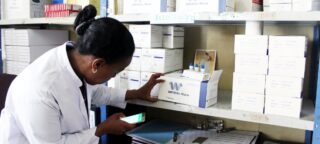In February, Ethiopia’s government announced plans to reinvent its biggest city as an African medical tourism hub with a new $400 million hospital complex. The for-profit hospital ought to open by next year. But while this plan sounds promising, it points to an irony. Ethiopia wants to take care of its tourists’ health while its own health sector suffers.
Africa’s second-most populous country has an acute drug shortage that has taken several lives and is threatening many more. Pharmacy shelves have become increasingly scanty as they can’t procure medicine, while hospitals are scraping for means to keep their patients healthy.
Like many of its African peers, Ethiopia’s health sector depends largely on imports, however, the country has a chronic foreign currency deficit, making it hard to secure the dollars needed to import goods. The current outlook doesn’t suggest that this situation will improve. Earlier this year, reports said Ethiopia’s National Bank had less than $1 billion in its reserves to facilitate imports. That’s enough for just under a month. Reuters said the same thing in December, citing sources that Ethiopia only had enough import cover for much less than a month.
The consequence is that a black market for medicine has emerged in Ethiopia. Many importers now rely on contraband medicine, whose prices are based on the parallel market currency exchange rate. The parallel market rate (118 birr/$) is over double the official rate (56 birr/$). That puts most medicines out of reach for the average resident, since nearly 70% of Ethiopians are multidimensional poor. These people’s health budgets are also dwindling because inflation is over 30%. The situation also exposes many of them to new health risks since the market is now awash with counterfeit products of substandard quality.
The two-year civil unrest that ended in 2022 is another core factor behind Ethiopia’s drug scarcity. The areas where conflict struck the hardest, such as the northern Tigray region, are the most affected. Access to the region has been problematic for many humanitarian agencies and medical suppliers. Ayder Hospital, a popular facility in Tigray’s regional capital Mekele, was under siege for two years during the conflict.
The Ethiopian government has long aspired to become a regional manufacturing hub through its fast-growing industrial parks. But its effort to ramp up manufacturing capabilities for the country to meet the needs of its fast-growing population has now fizzled amid conflicts and an exodus of foreign investors.
Last year, the government launched ‘Let Ethiopia Produce,’ a nationwide campaign as the Ethiopian Ministry of Industry acknowledged that hundreds of companies have stopped operating within the country.
How Ethiopia will turn its fortunes is still unknown. All we know is that it needs more dollars, and fast. Many lives depend on it.








